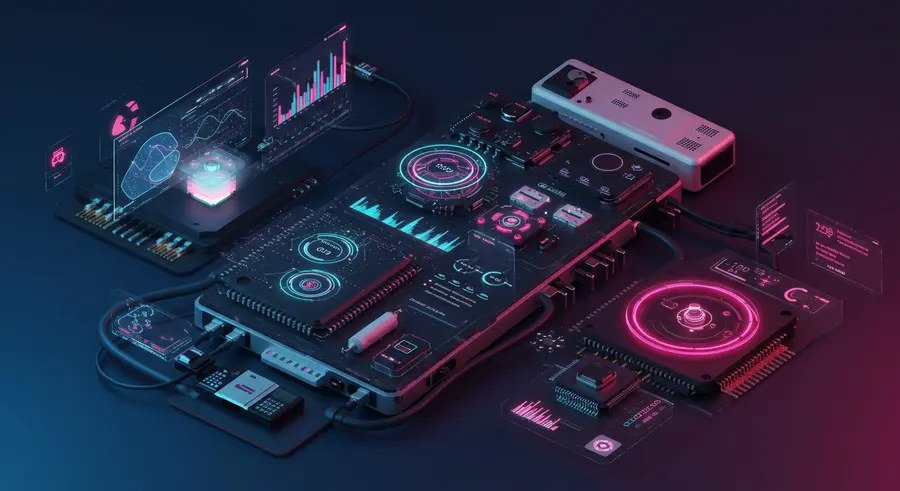Appearance

Welcome, tech innovators and web enthusiasts! 👋 Today, we're diving deep into the exciting evolution of Progressive Web Apps (PWAs), exploring how the seamless integration of Artificial Intelligence (AI) and direct Hardware Access is reshaping the digital landscape. This isn't just about making websites feel like apps; it's about pushing the boundaries of what web applications can truly achieve!
The PWA Revolution: A Quick Recap 🔄
Before we jump into the future, let's quickly remember why PWAs became so revolutionary in the first place. PWAs offer:
- Reliability: Thanks to service workers, they can work offline or on low-quality networks, providing a consistent user experience.
- Speed: Cached assets and optimized loading strategies ensure lightning-fast performance.
- Engagement: Features like push notifications, home screen installation, and full-screen mode make them feel like native applications.
You can learn more about the foundational concepts of PWAs in our detailed article: The Power of Progressive Web Apps (PWAs).
AI Infusion: Smarter PWAs for a Smarter World 🧠
The integration of AI into PWAs is a game-changer, transforming static web experiences into dynamic, intelligent, and personalized journeys. Imagine PWAs that can:
- Personalize User Experiences: AI algorithms can analyze user behavior, preferences, and context to deliver tailored content, recommendations, and interfaces. Think e-commerce PWAs that intuitively know what you're looking for, or news PWAs that curate articles based on your reading habits.
- Enhance Accessibility: AI-powered features like real-time language translation, voice commands, and intelligent content summarization can make PWAs accessible to a wider audience, breaking down barriers for users with diverse needs.
- Optimize Performance: AI can predict user needs and pre-fetch resources, optimize image loading based on network conditions, or even adjust UI elements for better readability, all in real-time.
- Power Intelligent Chatbots and Assistants: Integrate AI-driven chatbots directly into your PWA to provide instant customer support, answer queries, and guide users through complex tasks, even offline!
- Enable Advanced Analytics and Insights: AI can process vast amounts of user data within the PWA to provide developers with deeper insights into user engagement, pain points, and areas for improvement, leading to more informed development decisions.
Hardware Access: Bridging the Gap with Native Apps 📲
One of the historical limitations of web applications compared to native apps has been restricted access to device hardware. However, with advancements in Web APIs, PWAs are rapidly closing this gap. This opens up a world of possibilities for rich, interactive experiences:
- Geolocation & Sensors (GPS, Accelerometer, Gyroscope): Beyond basic location, imagine fitness PWAs that track your movements with precision, or augmented reality (AR) experiences directly in your browser without app installation.
- Camera & Microphone Access: PWAs can now leverage the device's camera for features like QR code scanning, image capture for document uploads, or even real-time video processing for AI-powered filters or object recognition. Voice interfaces and audio recording are also becoming seamless.
- Bluetooth & NFC Integration: Connect your PWA directly to external devices! This could enable PWAs for smart home control, industrial IoT device monitoring, or even contactless payments.
- File System Access: Users can directly interact with their device's file system, allowing PWAs to open, edit, and save files locally, blurring the lines between web and desktop applications.
- Web Share & Contacts API: Share content from your PWA directly to other apps on the device, or access user contacts for easy sharing and communication.
The Synergy: AI + Hardware Access in PWAs 🌐🔗
The true power emerges when AI and hardware access capabilities are combined within a PWA. Consider these innovative use cases:
- Smart Home Control PWA: Use AI to learn your preferences, then control smart devices via Bluetooth/Wi-Fi through the PWA. For example, an AI-powered PWA could automatically adjust lighting and temperature based on your presence detected via device sensors.
- Personalized Health & Fitness Coach: A PWA that uses device sensors (accelerometer, heart rate monitor) to track your workout, with AI analyzing your performance and providing real-time feedback and personalized coaching.
- On-Device Image Analysis with AI: A PWA could capture an image using the camera, then use on-device AI (via WebAssembly) to identify objects, perform facial recognition, or even generate descriptions, all without sending data to a server.
- Intelligent Inventory Management: A PWA on a mobile device could use the camera to scan barcodes and integrate with AI to update inventory levels, identify stock discrepancies, and even predict future demand.
The Future is Bright (and Intelligent!) ✨
The continuous evolution of PWAs, coupled with the rapid advancements in AI and expanded hardware access through Web APIs, paints a vibrant picture for the future of web development. These intelligent and capable web applications are not just an alternative to native apps; they are a powerful, accessible, and increasingly sophisticated platform for delivering truly innovative digital experiences.
Get ready to build the next generation of web applications that are smarter, more connected, and more impactful than ever before! What revolutionary PWA ideas will you bring to life? Share your thoughts and ideas in the comments below! 👇